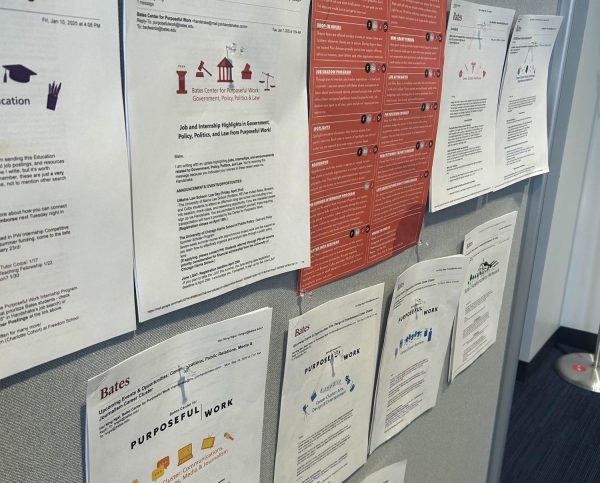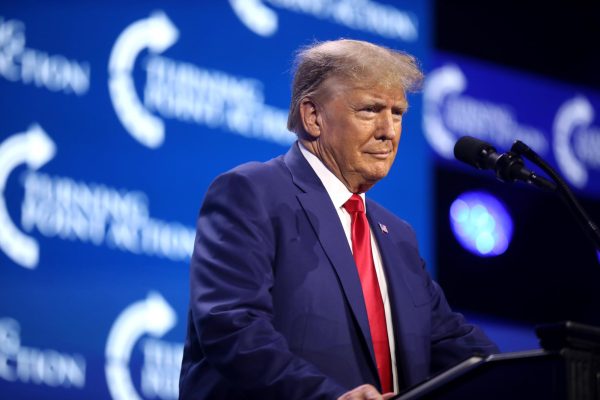Voting By Mail: An Insight to the Unique Nature of Election 2020
As we progress from October into November, the 2020 election is reaching its endgame. With the last presidential debate featuring the dynamic personalities of Donald Trump and Joe Biden having come to a close, one issue hasn’t been talked about as much as it should: voting by mail. Because of COVID-19, voting this year has been completely different from past years. Voting, in fact, has been at the forefront of messages from politicians, celebrities, and activists who have been preaching for an increase in civic participation from eligible voters. Whether it be focusing on youth voters, Hispanic voters, or female voters, both Trump and Biden have been adamant about getting their supporters to vote this year. However, For this article I want to focus on two main factors:
- How voting has changed in recent years
- How voting by mail is going to impact election 2020
The Bates Student contributors have written several articles so far about the 2020 election, analyzing the presidential debates, discussing voting suppression, and even trying to comprehend the political climate of this election. Following this election has been overwhelming. However, as we approach Nov. 3, it’s important to look at the voting statistics to see how many people have already voted and for which candidate. For starters, during the 2016 election, a total of approximately 138 million Americans voted, according to Penn State University. Over the past decade or so, a noticeable trend has been the decline in the voting turnout of recent elections. Specifically, in the past three elections, there has been a steady decline in the voter turnout rate in U.S. elections.
During 2008, the voter turnout rate was 61.6%, then in 2012 it was 58.6%, and finally it was 58.1% in 2016,. What does this decline in voting turnout suggest? There are a number of explanations from lack of interest to voter suppression, but in the uncommon year that 2020 has turned out to be, there have been uncommon levels in voter turnout. One of the many aspects of the 2020 election that has made this whole event so unique is that a lot of people have already voted. That’s right, already voted. Even though we are all anticipating election results on Nov. 3, the election is happening as we speak. Just two weeks ago, there was an estimated 26 million votes that have already been cast for the 2020 election; though, as I was writing this article, that number was bound to change.
Michael McDonald, who is a professor and political scientist from the University of Florida, is in charge of a newly founded election tracking program called the US Election Project. Within this program, Professor McDonald tracks the number of people who have voted and how they voted by the end of each week. Just recently, after the end of the day on Oct. 25, there have been a total of 47.2 million votes casted. Specifically, Professor McDonald has collected data from 17 states with the most active voter turnout, all who have been primarily using mail-in ballots, ranging from places such as California, Florida, Iowa, and even Maine. During the week of October 25th, 10,989,134 people have voted for Joe Biden and a total of 5,146,889 have voted for Donald Trump from these 17 states. Granted, these mail-in ballots have been returned and officially accounted for. Additionally, the votes that have been cast so far have resembled a rapidly increasing portion of votes cast compared to the 2016 election (43.7%), but that isn’t even the most important part of this data collection so far.
The main focus of this article is how voting has changed in this election cycle. Looking at the data from Professor McDonald’s U.S. Election Project, there has been a drastic difference between the number of people who have voted in-person and those who have mailed in their ballots. In states such as Colorado, Kentucky, and North Carolina, McDonald’s data has shown that more Republicans have mailed in their ballots than Democrats during the week of October 25th – 2,334,250 to 2,176,802. For mail-in ballots, there has been 40,231,976 who have already casted their votes. Due to COVID-19, there has been an incredibly dramatic discrepancy between those who have already voted in person in comparison to those who have voted by mail.
What the US Election Project has shown is that Democrats are showing up by the millions, but through mail-in ballots. What is the significance of these turns of events? The truth is that we all need to take a step back and realize that on Nov. 3 there is the large possibility of us still not having a clear picture of who is going to win the election. I know it is frustrating and nerve-racking but we must prepare for the unexpected. Specifically, I want to address that one of the main factors of this discrepancy in votes is due to the so-called “Blue Shift”. The “Blue Shift” is the theory, coined by Ohio State University professor Edward B. Foley, stating that Democratic candidates are making large electoral gains during and after the official election dates. Especially when it comes to provisional ballots, or ballots investigated by local election officials, there was an example of a “Blue Shift” during Arizona’s Senate race in 2018. On election day of 2018, initial tallies had Republican Martha McSally winning the Senate race, but Democrat Kyrsten Sinema eventually tallied more votes and won after almost a week of ballot-counting because of the “Blue Shift.”. Now here is how the “Blue Shift” is going to affect the 2020 election. With such a large number of Democrats voting for Joe Biden and Kamala Harris by mail, it will take a long time to count each vote. There is also the possibility that Donald Trump and Mike Pence will receive a larger proportion of in-person votes, which will be counted faster than mail-in votes. Now if the “Blue Shift” were to occur on November 3, we could see Trump having more votes on election night, but then see Biden pull ahead in the weeks ahead afterward. Especially, if the election is close, there is the possibility of not knowing the winner for a while.
Additionally, mail-in ballots are already encountering major problems. As many journalists and political analysts have already pointed out, there has been a large debate surrounding voter fraud as well as voter suppression. One of the many harsh realities of voting is that states have different procedures from each other. According to the Pew Research Center, early in August, around 61% of registered voters who live in states such as Colorado, Hawaii, and Utah that have declared mandatory voting by mail claim that voting is going to be easy. However, in Washington D.C. and other states, voting is going to a more difficult process. Specifically, data shows that 53% of voters who live in places such as Washington D.C., who are not conducting their elections entirely by mail, are now mailing in ballots. More importantly, there has been considerable resistance to mail-in voting. Trump has publicly vocalized that mail-in voting is going to result in “the most corrupt election in our nation’s history”. Especially for key battleground states such as Pennsylvania, election officials can’t begin counting ballots until 7am on election day.
Trump has preferred that votes be accounted for by election day and that the winner be declared on election night. What some call the “red mirage” is the prediction that Trump is determined to declare himself victor despite votes still being cast days and weeks after the election. There has been fear amongst many politicians that there might not be a peaceful transition of power if results don’t turn out in Trump’s favor. The truth is that we have to prepare ourselves for uncertainty in the coming weeks. Many votes during past elections have been counted after election night and that is going to happen this time around for sure. All states have until December 8th, exactly five weeks after election day, to account for any conflicts, contested votes, and to make a report confirming to the Electoral College that the results are valid. Just to be clear this is going to be an unprecedented election in unprecedented times. While November 3rd might be Election Day, we should really be thinking that this is going to be an Election month. So hold on everyone. We are in for a long ride.
Your donation will support the student journalists of Bates College and help us cover our annual website hosting costs.






